Integrated Bio-Reactor Biological Sewage Treatment System (IBR)
Composed of aerobic, anaerobic, and clarification zones, the IBR is designed to treat typical municipal wastewater. The operation and maintenance of the IBR is simple, as the system’s only moving mechanical parts are the aeration blowers, which drive air into the reactor.
- Bolted-steel structure eliminates need for expensive concrete tanks
- 30-foot high tank walls allow for increased oxygen transfer
- Internal clarifier tank reduces system footprint
- Reduced detention time delivers higher processing rate
- Minimal moving parts means lower power requirement and reduced maintenance
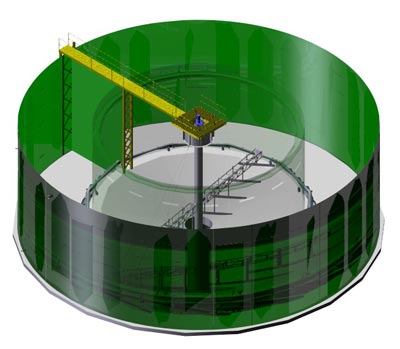
How the IBR Works
The Integrated Biological Reactor® has a vertical installation that results in a comparatively small footprint. The vertical installation also allows for an increase in the oxygen transfer rate to the wastewater. The wastewater is aerated using atmospheric air; this air is aspirated to the liquid by passing it through an air blower and a series of diffusers. This results in a simple and effective aerobic process.
The air is discharged through the bottom of the bioreactor. At this point the air is released flowing upward from roughly twice the standard depth of a normal Activated Sludge system. This, in turn, results in greater efficiency of Oxygen saturation into the wastewater.
The result of this retention time of air in the effluent, together with the perfect mixing of the extremely small micro bubbles of air with the liquid, creates the most effective and highest diffusion coefficient of oxygen in the water to date.
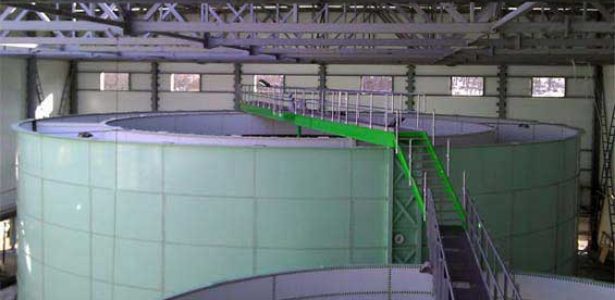
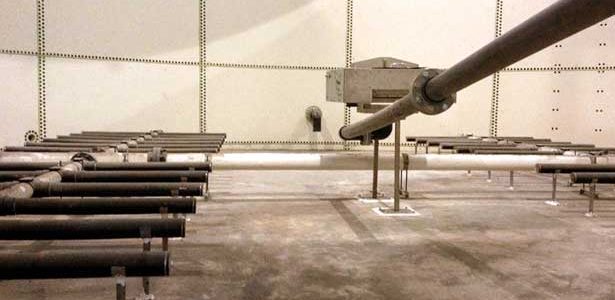
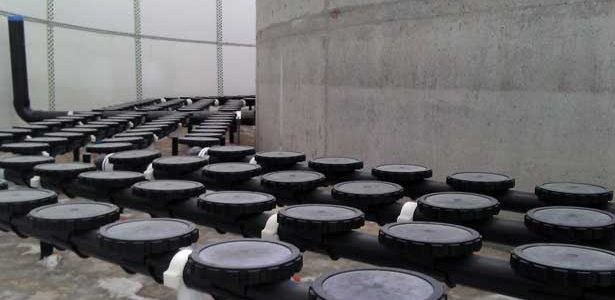
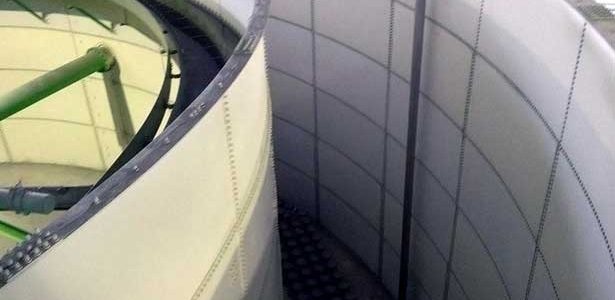
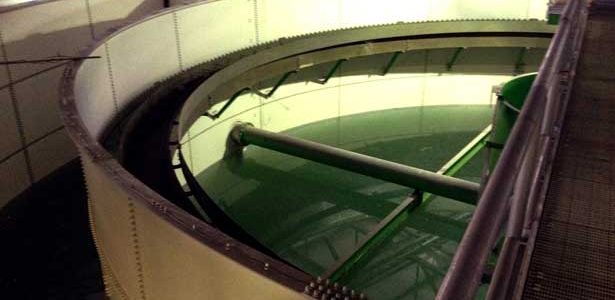
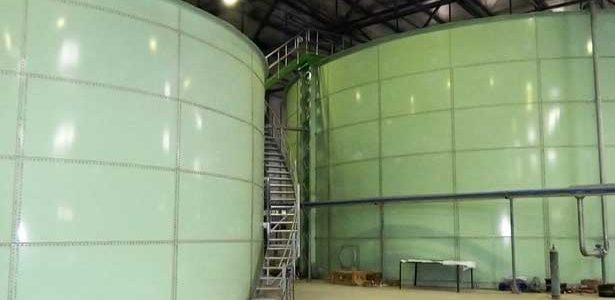
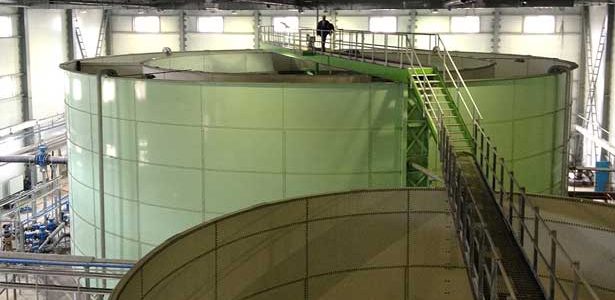

Integrated Bio-Reactor System Models
| Model | Flow (GPD) | m3/day | Population Equivalent | Outer Tank Diameter (ft) | Power Installed (kW/hr) |
| IBR-100 | 100,000 | 378.5 | 1893 | 18 | 9 |
| IBR-200 | 200,000 | 757 | 3785 | 25 | 18 |
| IBR-300 | 300,000 | 1135.5 | 5678 | 31 | 26 |
| IBR-400 | 400,000 | 1514 | 7570 | 36 | 35 |
| IBR-500 | 500,000 | 1892.5 | 9463 | 40 | 44 |
| IBR-600 | 600,000 | 2271 | 11355 | 44 | 53 |
| IBR-700 | 700,000 | 2649.5 | 13248 | 48 | 62 |
| IBR-800 | 800,000 | 3028 | 15140 | 51 | 70 |
| IBR-900 | 900,000 | 3406.5 | 17033 | 54 | 79 |
| IBR-1000 | 1,000,000 | 3785 | 18925 | 57 | 88 |
IBR Competitive Performance Analysis
| Process | Solids Retention Time (day) | F/M (kg BOD/kg MLVSS day) | Volumetric Load (kg BOD/m3/day) | MLSS (mg/L) | Total Hydraulic Retention Time (hr) | Return Activated Sludge (% influent) |
| High Rate Aeration | 0.5 - 2.0 | 1.5 - 2.0 | 1.2 - 2.4 | 200 - 1000 | 1.5 - 3 | 100 - 150 |
| SBR - Sequencing Batch Reactor | 10 - 30 | 0.04 - 0.1 | 0.1 - 0.3 | 2000 - 5000 | 15 - 40 | n/a |
| Extended Aeration | 20 - 40 | 0.04 - 0.1 | 0.1 - 0.3 | 2000 - 5000 | 20 - 30 | 50 - 150 |
| Integrated Bio-Reactor | 10 - 50 | 0.1 - 2.5 | 1.2 - 2.4 | 3000 - 6000 | 5 - 10 | 50 - 150 |
Sludge and Energy Reductions Realized
Significant sludge reduction achieved through use of IBR
Municipal wastewater treatment plant for 1M inhabitant city:
- High rate sludge production: 55g BOD5 x 1M x 0.55 = 30.25 Tons/day
- Extended aeration = 24.75 Tons/day
- Integrated Bio-Reactor = 4.95 Tons/day
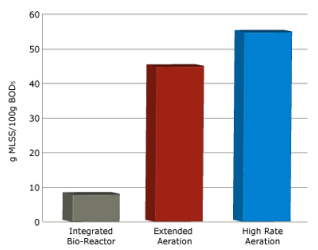
IBR Comparitive Energy Consumption
Municipal wastewater treatment plant for 1M inhabitant city:
- High rate aerobic = energy required 5,958 kWh
- Extended aeration = 4,182 kWh
- Integrated Bio-Reactor = 1,895 kWh
Energy reduction per year: (5,958 – 1,895) x 24 x 365 = 35,591 MW/year
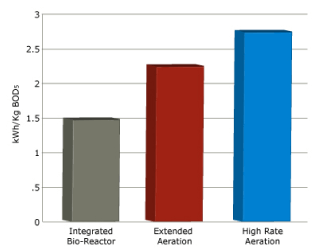
Client Recommendations


Do you have a project you'd like assistance with?

